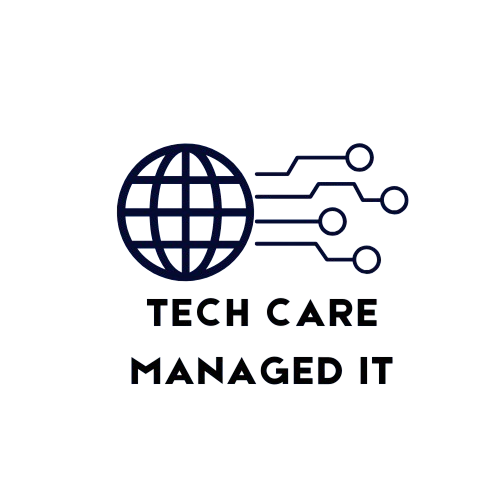Global IT delivery models have transformed how companies manage software development and IT services across continents. These models include offshore, nearshore, hybrid, and distributed teams that enable organizations to tap into diverse talent pools and optimize costs. However, managing such geographically dispersed teams presents challenges related to communication, coordination, and quality control. Innerworks International understands that Agile project management provides a powerful framework to overcome these hurdles and drive successful global IT delivery.
Understanding Global IT Delivery Models
Global IT delivery models refer to the strategies companies use to distribute their IT operations across multiple locations. Offshore delivery involves outsourcing work to distant countries with cost advantages, while nearshore delivery targets neighboring regions with cultural or time zone similarities. Onshore delivery keeps teams within the same country but often across cities, and hybrid models blend these approaches. Despite the benefits of these models, organizations face obstacles such as time zone differences, cultural variations, and communication barriers. Innerworks International leverages Agile to address these issues efficiently.
Agile Project Management: Key Principles and Practices
Agile is an iterative approach to project management focused on collaboration, flexibility, and delivering value incrementally. Its roots trace back to the Agile Manifesto, which emphasizes individuals and interactions, working software, customer collaboration, and responding to change. Frameworks like Scrum, Kanban, SAFe, and LeSS operationalize Agile principles to suit different team sizes and complexities. Innerworks International employs these frameworks to tailor Agile practices that best fit global teams’ unique needs.
How Agile Supports Global IT Delivery Models
Agile enhances global IT delivery by improving communication, adaptability, and transparency. Daily stand-ups and sprint reviews keep team members aligned, even when working across multiple time zones. Innerworks International uses asynchronous communication tools alongside real-time meetings to ensure smooth collaboration without overburdening any team’s schedule.
Flexibility in handling evolving client requirements is another Agile strength. Agile’s iterative cycles allow global teams to adjust priorities and deliverables promptly. Innerworks International integrates continuous feedback loops so that clients across the world receive faster, more relevant updates.
Incremental releases and faster feedback cycles reduce delays often caused by geographical dispersion. Innerworks International emphasizes short delivery sprints that enable quicker validation of work and early problem detection.
Cultural alignment is fostered through Agile ceremonies such as retrospectives and planning sessions, which promote shared understanding and team cohesion despite cultural differences. Innerworks International invests in cross-cultural training and inclusive facilitation to make these ceremonies effective.
Transparency in workflows is maintained using Agile boards, burndown charts, and centralized dashboards, allowing all stakeholders to monitor progress and challenges in real time regardless of location.
Benefits of Using Agile for Distributed IT Teams
Innerworks International has observed multiple benefits when adopting Agile for distributed teams. Productivity improves as bottlenecks are identified and resolved swiftly through continuous collaboration. Stakeholder engagement increases because Agile invites regular input from clients and end-users globally. Faster problem-solving and risk mitigation happen as issues are caught early during iterative cycles. Quality control is enhanced by continuous integration and automated testing practices integrated within Agile workflows.
Real-World Examples of Agile in Global IT Projects
A recent global software rollout managed by Innerworks International involved teams from North America, Europe, and Asia. By adopting Scrum and adjusting sprint timings to accommodate different time zones, the project achieved on-time delivery with fewer defects than previous traditional approaches. Another example includes Innerworks International’s support for offshore development centers that transitioned from waterfall to Agile. The shift resulted in a 30% increase in delivery speed and significantly improved client satisfaction scores.
Best Practices for Implementing Agile in Global IT Delivery
Choosing the right Agile framework is critical. Innerworks International evaluates team distribution, project complexity, and organizational culture before recommending Scrum, Kanban, SAFe, or hybrid approaches. Collaboration tools like Jira, Confluence, Slack, and Microsoft Teams are standard for maintaining communication and task tracking. Agile ceremonies are adapted to be inclusive across time zones, sometimes using recorded sessions and staggered meetings. Cross-cultural awareness training is provided to enhance empathy and reduce misunderstandings. Leadership support and a commitment to continuous improvement ensure that Agile practices evolve alongside project needs.
Common Pitfalls and How to Avoid Them
Common mistakes include misaligned expectations across regions and attempting to implement Agile without adjusting for distributed environments. Innerworks International advises against over-relying on synchronous communication, which can exhaust global teams. Skipping retrospectives or neglecting feedback loops reduces the opportunity to refine processes. Avoiding these pitfalls requires a deliberate and customized Agile adoption strategy supported by experienced coaches and facilitators.
Future of Agile in Global IT Delivery Models
Agile’s future in global IT delivery involves deeper integration with AI and automation tools to further streamline workflows and decision-making. Scaling Agile for multi-continent projects will continue to evolve through frameworks like SAFe and hybrid methodologies combining Agile, DevOps, and Lean principles. Innerworks International remains at the forefront of these innovations, helping clients adopt next-generation Agile practices that enhance global collaboration.
Takeaway
Agile project management stands as a cornerstone for successful global IT delivery models. Its focus on communication, adaptability, transparency, and iterative value delivery makes it uniquely suited to overcome the challenges of distributed teams. Innerworks International’s expertise in Agile implementation empowers organizations to harness the full potential of global IT delivery, driving faster results, higher quality, and improved stakeholder satisfaction worldwide.
FAQs
What is the best Agile framework for global IT delivery?
The choice depends on team size, distribution, and project complexity. Scrum and SAFe are popular for large, distributed teams, while Kanban suits continuous flow environments. Innerworks International can help select and customize the right framework.
How does Agile help with time zone challenges in IT projects?
Agile promotes asynchronous communication and flexible scheduling of ceremonies to accommodate global teams, minimizing delays and maintaining collaboration.
Can Agile be used in large-scale global software rollouts?
Yes, scaled Agile frameworks like SAFe are designed to manage large, complex projects with distributed teams effectively.
What tools support Agile project management in distributed teams?
Tools like Jira, Confluence, Slack, and Microsoft Teams enable task tracking, documentation, and communication essential for Agile success across locations.











